| General Areas of Concern |
| Assignments / Homework:
· Frequent work breaks
· Allow use of computer or technology to complete assignments
· Allow projects / written assignments to be presented orally or on tape
· Allow projects to presented through demonstration pictures and / or models
· Extended time to complete assigned work
· Shorten or chunk assignments / work periods
· Simplify complex directions
· Break long assignments into manageable chunks
· Assist student in setting short-term goals
· Pair written instructions with oral instructions
· Develop private signal so that student can let teacher know if repetition of instruction is needed
· Check homework daily
· Reduce amount of homework
· Limit homework to specified # of minutes / night
· Permit re-submitted assignments
· Grade written work on content, not spelling, handwriting, or mechanics
· Adapt assignments to minimize writing (e.g. circle, cross out, etc.)
· Provide study skills training / learning strategies
· Reduce the reading level of assignments
· Use self-monitoring devices (checklists, visual aids, etc.)
· Provide distributed review and drill
|
| Attention:
· Provide cognitive behavioral feedback: positive feedback for attention to task with frequency based on what student can currently do
· Short-term reinforcers that provide feedback (happy face, check mark, star, in-class rewards) or long –term (accumulated points to exchange for positive reinforcement at school or home)
· Plan academic instruction for student’s peak attention time
· Allow student to stand at times during seatwork
· Require active responses in instruction (e.g. talking, moving, organizing, work at whiteboard or slate, interacting with computer, etc.)
· Provide short break between assignments
· Give child substitute verbal or motor responses to make while waiting
· Provide fidget object for manual activity (eg. Koosh ball, clay, worry beads, etc.)
· Teacher proximity
· Preferential seating
· Positive feedback / reward for short periods of waiting
· Increase novelty to gain / sustain attention
· Alternate high and low interest tasks
· Increase choice of tasks
· Place student first in line or avoid lines altogether
· Build in opportunities for movement
· Teach compensatory strategies for organization
· Provide increased supervision during unstructured times (e.g. recess, transitions, field trips, etc.)
· Home-school communication procedures / strategies
· Non-verbal cues between teacher / student for behavior monitoring
· Highlight important or required information
· Student checklists for self-monitoring
· Adapt student’s work area to help screen out distractions
· Grade for content, not neatness, spelling, mechanics
· Avoid withholding physical activity as negative reinforcer
|
| Classroom Environment and Seating:
· Predictable daily routines
· Schedule changes addressed ahead of time
· Consistent and clear expectations / procedures / boundaries set for classroom behavior
· Work alternates short, concentrated periods with breaks
· Minimize visual or auditory distractions
· Small group instruction
· Team teaching
· Identify teaching-style / student match (e.g. structured, nurturing, etc.)
· Preferential seating (near teacher, near study buddy, front of classroom, etc.)
· Allow personal space around desk
· Allow legitimate movement
· Use study carrel or partitions at independent work times |
| Learner Needs / Behavior:
· Allow for short breaks between assignments
· Allow student more time to pass in the hallway
· Allow student time out of seat to run errands, etc.
· Cue student to stay on task (non-verbal signal)
· Implement a behavior management system
· Use visual depictions of expected procedures
· Clear, simple, consistent classroom rules and procedures
· Point out positive behaviors
· Provide positive reinforcement
· Set defined limits
· Use self-monitoring strategies
· Provide behavioral feedback frequently (written, non-verbal signal, etc.)
· Ignore minor, inappropriate behavior
· Increase immediacy or rewards or consequences
· Supervise closely during transition times
· Call on only when student has followed classroom procedure (raising hand, waiting to be called on, etc.)
· Establish behavior contract with specified goals (2-3 at most), student input on goals as appropriate
· Prudent use of negative consequences
· Provide immediate feedback for both appropriate and inappropriate behaviors
· Avoid lecturing or criticism
· Implement home-school communication system
· Communicate with student in writing if behavior is intended to engage verbal interaction
· Provide opportunities for student to show responsibility for classroom tasks (e.g. straighten classroom shelves, water plants, etc.) |
| Lesson Presentation:
· Allow students to tape lessons or lectures for replay
· Break long presentations into short segments
· Emphasize multi-sensory teaching: auditory, visual, tactile-kinesthetic
· Emphasize critical information / key concepts
· Include a variety of activities during each lesson
· Pair students to check work
· Pre-teach vocabulary (front-load)
· Peer note-taker
· Peer tutor
· Provide visual aides
· Provide written outline or other written material
· Written steps / checklist for multiple step directions
· Frequent checks for understanding / comprehension
· Have student repeat directions to teacher or peer
· Provide key points in writing / visually / as well as in auditory format
· Use advanced organizers / study guides
· Computer assisted instruction
· Use of manipulatives
· Specialized curriculum |
| Organization:
· Extra set of texts at home
· Assign volunteer homework buddy
· Assignment notebook with home / school connection
· Adult / peer to review assignment notebook and materials before leaving for home
· Organizational aids such as outlines, graphic organizers, checklists
· Photographs or visual aids that depict what desk, book bag, folders, etc. should like in an organized manner
· Colored folders
· Color and physical / spatial organizers |
| Socialization and Social Skills:
· Provide recess / lunch opportunities with friend in structure setting
· Provide lunch buddies
· Establish social behavior goals and reward program
· Establish social stories for areas that are difficult for the student
· Non-verbal prompts to remind of appropriate social behavior
· Avoid placing student in situations that have a pattern of being difficult for him / her
· Provide social skills training (school-related skills, friendship skills, dealing with feelings, alternatives to aggression, dealing with anxiety / stress, etc.) |
| Testing:
· Allow extra time
· Allow open book tests
· Give test orally
· Take home tests
· Adjusted setting for test-taking (small group or individual)
· Provide written outline of main points prior to test
· Untimed
· Give extended time if necessary
· Break test into shorter chunks and testing periods
· Identify whether test will assess abilities or disabilities
· Grade test for content, not handwriting, spelling, or mechanics
· Give frequent short quizzes, rather than long exams
· Allow outlines or notes during quiz / test
|
| Specific Areas of Disability |
| Allergies
Example: The student has severe allergic reactions to certain pollens and / or foods. For purposes of this example the condition substantially limits the major life activity of breathing and may interfere with the students’ ability to get to school or participate once there.
Possible accommodations and services:
· Avoid allergy –causing substances: soap, weeds, pollen, food
· In-service necessary persons: dietary staff, peers, coaches, etc.
· Allow time for shots / clinic appointments
· Use of air purifiers
· Adapt physical education curriculum during high pollen time
· Improve room ventilation (e.g. when remodeling has occurred and materials may cause reaction)
· Develop health care and / or emergency plans
· Address pets / animals in the classroom
· Involve school health consultant in school related health issues
· Train for proper dispensing, monitoring, and distribution of medications and monitoring for side effects
· Address pets / animals in the classroom |
| Arthritis
Example: A student with severe arthritis may have persistent pain, tenderness or swelling in one or more joints. A student experiencing arthritic pain may require a modified physical education program. For purposes of this example, the condition substantially limits the major life activity of learning.
Possible accommodations and services:
· Provide a rest period during the day
· Accommodate for absences for doctors’ appointments
· Provide assistive devices for writing (e.g. pencil grips, non-skid surface, typewriter / computer, etc.)
· Adapt physical education
· Administer medication following health protocol
· Train staff for proper dispensing, monitoring, and distribution of medications, monitor for side effects
· Arrange for assistance carrying materials and supplies (e.g. books, lunch tray, etc.)
· Implement movement plan to avoid stiffness
· Provide seating accommodations
· Allow extra time between classes
· Provide locker assistance
· Provide modified eating utensils
· Develop health and emergency plans
· Provide for accommodations for writing tasks: a note taker, copies of notes, computer or tape recorder, etc.)
· Make available access to wheelchair / ramps and school van / bus for transportation
· Provide time for massage or exercise
· Adjust recess time and activities
· Provide peer support groups
· Instructional aide supports
· Record lectures / presentations
· Padded chairs / comfortable seating
· Adjust attendance policy
· Altered school day
· Extra set of books for home
· Warmer room and seating near heat source
· Allow student to respond orally for assignments, tests, etc.
· Awareness program for staff and students
· Monitor special dietary considerations
· Involve school nurse in health protocols and decision making
· Provide post-secondary or vocational transition planning
|
| Asthma
Example: A student has been diagnosed as having severe asthma. The doctor has advised the student not to participate in physical activity outdoors. For purposes of this example, the disability limits the major life activity of breathing.
Possible accommodations and services:
· Adapt activity level for recess, physical education, etc.
· Provide inhalant therapy assistance
· Train staff/student for proper dispensing, monitoring, and distribution of medication, monitor for side-effects
· Remove allergens (e.g. hairspray, lotions, perfumes, paint, latex, etc.)
· Accommodate medical absences
· Adapt curriculum expectations as appropriate (e.g. science, physical educations, etc.)
· Develop health and emergency plans
· Have peers available to carry materials to and from classes (e.g. lunch tray, books, etc.)
· Make health care needs known to appropriate staff
· Place student in most easily controlled environment
· Provide indoor space for before and / or after school activities
· Provide rest periods |
| Bipolar Disorder or Mood Disorder – NOS (not otherwise specified)
Example: The student was diagnosed as having a bipolar disorder, however the severity (frequency, intensity, duration considerations) of the condition did not qualify the student for Special Education support under IDEA. A properly convened 504 team determined that the condition did significantly impair the major life activity of learning and designed a 504 accommodation plan for the student.
Possible accommodations and services:
· Break down assignments into manageable parts with clear, simple directions, given one at a time
· Plan advanced preparation for transition
· Monitor clarity of understanding and alertness
· Provide extra time on tests, class work, and homework if needed
· Strategies in place for unpredictable mood swings
· Provide appropriate staff training for mood swings
· Create awareness by staff of potential victimization from other students
· Allow most difficult subjects at times when student is most alert
· Implement a crisis intervention plan for extreme cases where students is out of control and may do something impulsive or dangerous
· Provide positive praise and redirection
· Reports any suicidal comments to counselor / psychologist immediately
· Consider home instruction for times when the student’s mood disorder make it impossible for him / her to attend school for an extended period
· Adjusted passing time
|
| Cancer (or other long-term medical concerns)
Example: A student with a long-term medical problem may require special accommodations. A condition, such as cancer, may substantially limit the major life activities of learning and caring for oneself (e.g. a student with cancer may need a class schedule that allow for rest and recuperation following chemotherapy or other treatment).
Possible accommodations and services:
· Adjust attendance policy
· Limit number of classes taken; accommodate scheduling needs
· Hospital-bound instruction (this is sometimes arranged through the hospital)
· Home-bound instruction
· Take whatever steps necessary to accommodate student involvement in extracurricular activities if they are otherwise qualified
· Adjust activity level and expectations in classes based on physical limitations; don’t require activities that are physically taxing
· Train for proper dispensing, monitoring, and distribution of medications, monitor for side effects
· Provide appropriate assistive technology
· Provide a private rest area
· Adjusted school day
· Send additional sets of texts and assignments to hospital schools
· Adjust schedule to include rest breaks
· Tape lessons, adjust expectations for homework and assessment
· Provide counseling; peer support
· Adapt physical education
· Provide access to school health services
· Provide awareness training for staff and students as appropriate
· Develop health care emergency plan
· Peer tutor
· Student buddy for participation in sports
· Initiate a free pass system from the classroom
· Ongoing home / school communication plan
· Notify family of communicable diseases at school
· Designate a person in school to function as liaison with parents as a means of updating changing health status
· Adjusted passing time |
| Cerebral Palsy
Example: The student has serious difficulties with fine and gross motor skills, although cognitive skills are within the average to above average range. A wheelchair is used for mobility. For purposes of this example, the condition substantially limits the major life activity of walking.
Possible accommodations and services:
· Assistive technology devices
· Arrange for use of ramps and elevators
· Allow for extra time between classes
· Assistance with carrying books, materials, lunch tray, etc.
· Adapt physical education curriculum
· Provide for physical therapy as appropriate
· Train for proper dispensing, monitoring, and distribution of medications, monitor for side effects
· Adapt eating utensils
· Transportation
· Initiate a health care plan that also addresses emergency situations
· Paraprofessional support (e.g. trained in the specific needs of this student – feeding, transporting, etc.)
· Adapted assignments
· Educate peers / staff with family permission
· Ensure accessibility to all programs during the school day as well as extracurricular activities
· Ensure that bathroom facilities, sinks, water fountains are accessible
· Adjusted passing time
|
| Chronic Infectious Diseases (i.e. Acquired Immune Deficiency Syndrome – AIDS, etc.)
Example: The student frequently misses school and does not have the strength to attend a full day. For purposes of this example, the student has a record of a disability which substantially limits the major life activity of learning.
Possible accommodations and services:
· Review district policies regarding communicable diseases
· In-service staff (and students as appropriate) regarding the disease, how it is transmitted, how it is treated (consult appropriate district policies)
· In-service staff regarding confidentiality issues
· Train for proper dispensing, monitoring, and distribution of medications, monitor for side effects
· Adjust attendance policies, school day, and / or schedule
· Provide rest periods
· Adapt Physical Education curriculum
· Establish routine communication with health professionals, school nurse, and home
· Develop health care and emergency plan
· Train appropriate school staff on medical / emergency protocol
· Provide 2-way audio / video link between home and classroom via computer
· Home–bound instruction
· Adapt assignments and tests
· Provide an extra set of textbooks for home
· Provide transportation to and from school
· Tape books or provide a personal reader
· Participation in a support group
· Videotape classroom lessons
· Promote the most supportive, least restrictive classroom environment. |
| Cystic Fibrosis
Example: The student has an extensive medical history, which includes the diagnosis of cystic fibrosis. He has significant difficulty breathing and will be absent often due to respiratory infection. For purposes of this example, learning and breathing are the major life activities that are substantially impaired.
Possible accommodations and services:
· Train for proper dispensing, monitoring, and distribution of medications, monitor for side effects
· Health care plan for management of acute and chronic phases
· Establish routine communication with health professionals, school nurse, and home
· Adjust attendance policies, school day, and / or schedule
· Educate peers / staff with family permission
· Home-bound instruction
· Adapted assignments / tests
· Tutoring
· Support group
· Adapt Physical Education curriculum
· Allow for rest periods
· Transportation |
| Deaf / Hearing Impairment
Example: A student was diagnosed with a substantial hearing impairment at an early age, which resulted in hearing loss and a mild speech impediment. He compensates through both lip reading and sign language. Academic abilities test in the average range. For purposes of this example, hearing is the major life activity that is substantially impaired.
Possible accommodations and services:
· Allow for written directions / instructions in addition to oral presentation
· Ensure delivery of instruction facing the student to allow lip reading
· Provide visual information as primary mode of instruction
· Allow for provision of interpreter services during school day or school events
· Install acoustical tile, carpeting
· Seat in a location with minimal background noise
· Provide paper / pencil / slate / technology to write or draw responses or requests
· Facilitate acquisition of TDDs and related assistive technology
· Allow for extra time between classes
· Provide post-secondary or vocational transition planning |
| Diabetes
Example: A sixth grade student with Type I Diabetes requires numerous accommodations to maintain optimal blood sugar, even though he is quite independent in managing the disease. For purposes of this example, he is substantially limited in the major life activity of caring for oneself.
Possible accommodations and services:
· Assistance with and privacy for blood glucose monitoring or insulin injections
· Snacks / meals when and wherever necessary
· Free access to water and bathroom
· Full participation in any extra-curricular programs
· Scheduling physical education around meal times
· Allowances for increased absences
· Health care plan for management of condition in the school setting and in emergencies
· Educate staff to signs / symptoms of insulin reaction / hypoglycemia (e.g. hunger, shakiness, sweatiness, change in face color, disorientation, drowsiness, etc.)
· Provide assistance to walk to the clinic if the student is feeling poorly
· Create an emergency signal with office to alert health personnel when they need to come to the child
· Train for proper dispensing, monitoring, and distribution of medications, monitor for side effects
· Establish routine communication with health professionals, school nurse, and home
· Store equipment and documentation in a readily accessible location for student, family, and school nurse or health secretary |
| Emotionally Disturbed
Example: An emotionally disturbed student may need an adjusted class schedule or assignments due to allow for regular counseling or therapy. For purposes of this example, the condition substantially limits the individual’s major life activity of learning.
Possible accommodations and services:
· Train for proper dispensing, monitoring, and distribution of medications, monitor for side effects
· Maintain weekly / daily journals for self-recording of behavior
· Establish home-school communication system
· Schedule periodic meetings with school, family, and treatment specialists
· Provide carry-over of treatment plans into school setting
· Assist with inter-agency referrals
· Behavior management programs
· Frequent positive feedback
· Develop student behavior contracts
· Develop visual cues and non-verbal signals for feedback
· Teach specific procedures and behavioral expectations
· Counseling, social skills instruction
· Adapt schedule
· Schedule shorter work / study periods according to attention span capabilities
· Provide post-secondary or vocational transition planning |
| Encopresis / Enuresis
Example: A student urinates or defecates in clothing, not because of physical incontinence but a needed behavior change (e.g. toilet training, bowel / bladder retraining, etc.) For purposes of this example, the student is substantially limited in the major bodily function of bowel and / or bladder functioning and the major life activity of caring for oneself.
Possible accommodations and services:
· Create a specific plan for instances of soiling, including: student goes to specific location for clean-up and change of clothing, plan for soiled clothing, parent contact, etc.
· Maintain clean change of clothing at school in the clinic or alternate location
· Record events to attempt to determine consistent triggers of behavior
· Establish home, school, medical personnel communication
· Support bowel / bladder retraining program that is recommended by physician
· Schedule time for student to use the restroom
|
| Epilepsy (other seizure disorder)
Example: The student is on medication for seizure activity, but experiences several petit mal seizures each month. This condition substantially limits the major life activity of learning.
Possible accommodations and services:
· Consistent school, home, medical personnel communication
· Documentation procedure to record and communicate characteristics of each seizure
· Train for proper dispensing, monitoring, and distribution of medications, monitor for side effects
· Train staff and peers as appropriate
· Develop health plan and emergency protocol
· Anticipate process should a seizure occur: Move seating / clear space during seizure, do not insert objects into student’s mouth during seizure, administer no fluids if student is unconscious, turn unconscious student on side to avoid aspiration, provide rest time, accommodate return to academic demands following seizure, etc.
· Arrange a buddy system or adult assistance, especially during field trips
· Alternative recess, adapt physical activities
· Accommodate for make-up work or class time missed
· Observe for consistent triggers of seizure activity (e.g. smells, bright light, perfume, hair spray, etc.)
· Provide post-secondary or vocational transition planning
|
| Learning Disabilities (non-specific)
Example: The student has a learning disability that impacts her ability to read. She has more difficulty with word decoding and spelling than comprehension. Completing reading tasks is difficult and slow. She does not qualify for Special Education services, but there is ample evaluative evidence that she is substantially limited in the major life activity of learning.
Possible accommodations and services:
· Provide reading materials that cover course context at a lower readability level
· Extended time on tests
· Arrange for volunteer readers
· Provide information regarding accessing books on tape and other materials Allow access to spell checkers and / or word processing
· Oral directions in addition to written
· Frequent checks for understanding
· Visual or non-verbal signals cues to check for understanding
· Clearly sequenced instruction
· Visual graphs / charts / organizers / diagrams to support instruction
· Provision of computer access
· Tests read aloud to student
· Computer access
· Direct instruction of time-management / organizational skills
· Direct instruction of coping skills / strategies
· Support in helping student recognize areas of strength and how to capitalize on them
· Support in use of strategies to assist memory and problem-solving
· Multi-sensory instructional methods / differentiated instruction specific to this student
· Provide post-secondary or vocational transition planning |
| Orthopedically Impaired
Example: The student has limited mobility and uses a wheelchair. For purposes of this example, the student is substantially limited in the major life activity of walking.
Possible accommodations and services:
· Develop a health care and emergency plan
· Adaptive physical education program
· Physical therapy at school
· Provide extra between class periods
· Supply a set of textbooks for home
· Provide a copy of class notes from peer
· Plan for and practice emergency exits from school building
· Ensure accessibility of facilities / pathways / programs / school events
· Assistance carrying materials, lunch trays, etc.
· Provide post-secondary or vocational transition planning |
| Special Health Care Needs
Example: The student has a special health care problem that requires clean intermittent catheterization twice each day during the school day. For purposes of this example this condition substantially limiting in the major life activity of caring for oneself.
· Provide trained personnel to perform special medical procedures. Train for proper dispensing, monitoring, and distribution of medications, monitor for side effects
· Provide student with private location and time to perform procedures if independent
· Involve school nurse, family, school staff, and medical personnel in regular communication
· Preferential seating
· Adapt recess, physical education, transportation
· Develop health care and emergency plans
· Adapt attendance policy
· Adapt homework / instruction for class time missed for medical reasons
· Homebound instruction |
| Tourette’s Syndrome
Example: The student exhibits tics and some inappropriate gestures and sounds. For purposes of this example, the condition is substantially limiting in the major life activities of learning and caring for oneself.
Possible accommodations and services:
· Provide student with a means of catching up on missed assignments
· Pair with a peer for studying
· Educate staff / peers about associated outbursts, tics, gestures with family permission
· Arrange for frequent home / school /medical personnel communication
· Train for proper dispensing, monitoring, and distribution of medications, monitor for side effects
· Implement a behavior management program if indicated
· Use visual or non-verbal signals to cue student about behaviors (positive and negative)
· Provide supervision for transition activities, during agitated periods
· Provide alternative / larger work-space area or appropriate space for the child
· Direct instruction of compensatory strategies
· Adapt assignments if indicated
· Provide post-secondary or vocational transition planning |
| Traumatic Brain Injury
Example: The student sustained a brain injury in an automobile accident. Many academic and motor skills have been seriously affected by the injury. The student does not qualify for Special Education services. The condition is substantially limiting to the major life activities of learning and performing manual tasks.
Possible accommodations and services:
· Adjusted school day
· Adjust assignments and homework
· Provided tutoring
· Furnish memory / organizational aids
· Provide alternative testing
· Arrange an emergency plan / health protocol
· Monitor for seizure activity
· In-service staff and peers with student / parent permission
· Monitor for fatigue / mental exhaustion
· Provide frequent breaks during periods of intense concentration
· Provide strategies and assistance with organizing / sequencing tasks
· Provide post-secondary or vocational transition planning |
| Visual Impairment
Example: A student has a progressive medical disorder, which results in increasing loss of visual acuity. He now requires both enhanced lighting and enlarged print materials in order to read. For purposes of this example, the condition is substantially limiting in the major life activity of seeing.
Possible accommodations and services:
· Preferential seating
· Adaptations to physical environment (e.g. consistent room arrangement, removal of obstacles, etc.)
· Copies of text / reading materials for adaptation (e.g. enlarged type, etc.)
· Modified writing tools (e.g. dark felt tip pens, dark lined writing paper, desktop slantboard, etc.)
· Slate and stylus
· Braille accommodations (e.g. Perkins Brailler, textbooks, materials, tests, in Braille, etc.)
· Raised lines on writing paper
· Low vision devices including magnifiers, monocular glass, closed-circuit TV
· Books on tape
· Oral, instead of written tests
· Tactile maps
· Computer with enlarged print screen / adaptations
· Speech synthesize for input and output
· Screen reading device
· Optical Character Recognition System Scanner
Adapted from: **www.advancingmilestones.com
** Puget Sound, ESD, Office of Special Services, November, 2002 |














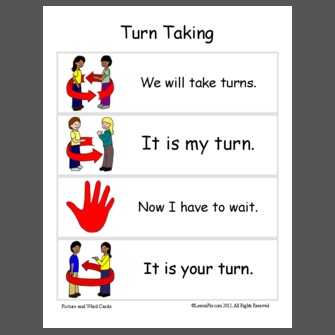








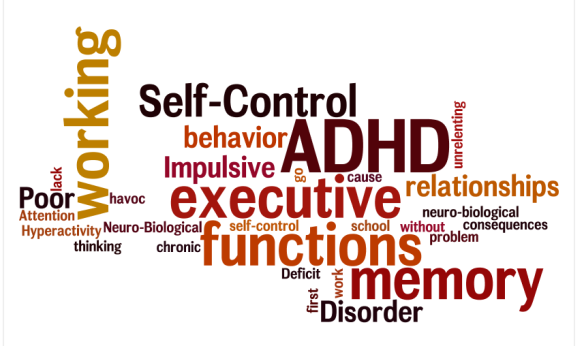



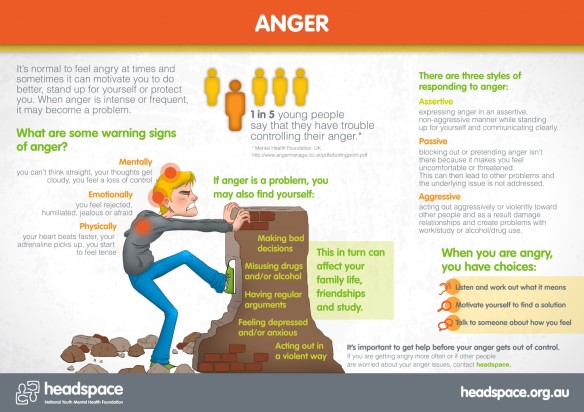
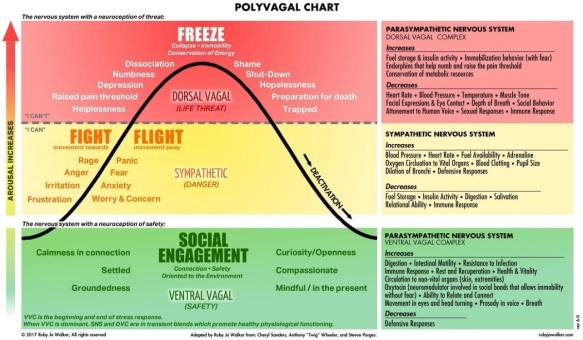 Anger –
Anger – 



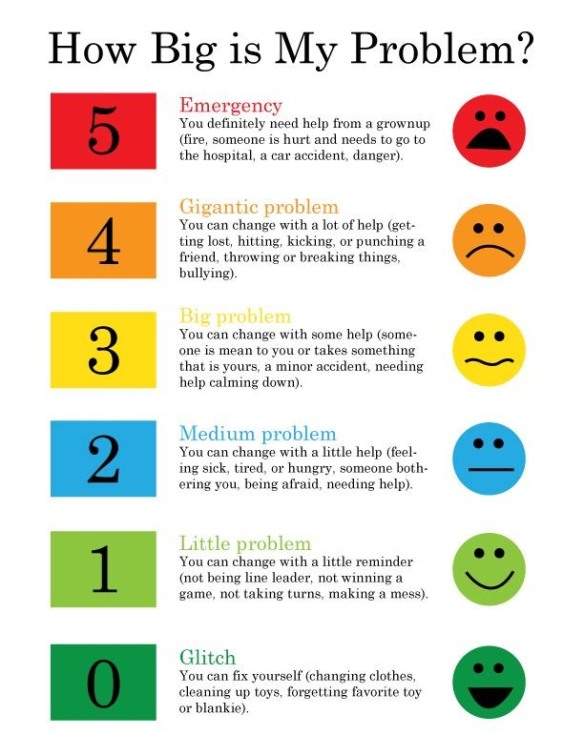



 We recently piloted a behavior management system in one of our Special Education Classroom called
We recently piloted a behavior management system in one of our Special Education Classroom called 